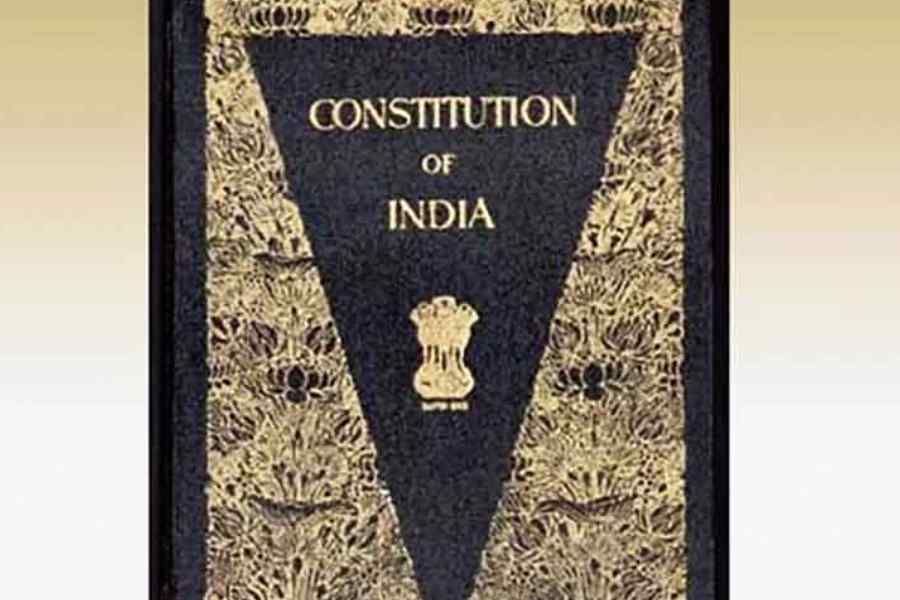Indian federalism is academically and constitutionally least explored. The Supreme Court took more than four decades to declare federalism to be one of the basic features of the Constitution. It has generally preferred a ‘federation-centric’ approach to a ‘federalism-centric’ approach. In the ‘federation-centric approach’, emphasis is placed on power-relocation and boundary-fixing between two or more levels of government. Contrastingly, in a ‘federalism-centric’ approach, the court goes by the constitutive-rights theory in fixing power boundaries.
In the ‘federation-centric’ approach, judicial narratives are largely determined by the semantics of ‘union’, ‘quasi’, ‘qua’ besides unitary codes of phrases like ‘national interest’, ‘larger public good’, and such power-limiting constitutional crafts as ‘subject to’ and ‘if not otherwise provided’. Consequentially, one finds considerable jurisdictional loss of the states. Besides characterising India as “quasi-federal” or “hybrid federal” in the State of West Bengal vs Kesoram Industries Ltd and Ors, 2004, the court underlined the power-limiting ramifications of the terms, “subject to” and ‘if not otherwise provided’. Much of the interpretative ambiguities occurred due to the oversalience of ‘union’ as ‘national’ and ‘centre’ as ‘union’; hence the great push towards over-centralisation. Even the celebrated Bommai judgment (1994) is not an exception to this fallacy when it writes “the State qua the constitution is federal in structure and independent… Qua the Union, State is quasi-federal.”
By and large, the court has failed to construct federalism as a sovereignty-sharing principle. It may piously ordain for ‘coordination’, yet the state continues to remain an agency of an ambitiously oversized Centre. As reflected in B.R. Ambedkar’s speech in the Constituent Assembly, ‘sovereignty of states’ jurisdiction’ is one of the established principles of the Constitution. Unfortunately, one does not find sufficient echo of this principle in judicial pronouncements.
Recently, in the Government of NCT of Delhi vs Union of India, 2023, the Constitution bench headed by the Chief Justice of India attempted to retrieve federalism from its ‘qua-quasi’ foundation to an ‘autonomous and plurality base’. The court writes: “Federalism in… India… is a means to reconcile the desire of commonality along with the desire for autonomy…” In Union of India & Anr. vs M/s Mohit Minerals Pvt Ltd, 2022, the Supreme Court questioned the notion of “dominant power”: “Democracy and federalism are interdependent on each other for their survival such that federalism would only be stable in well-functioning democracies… the constituent units in a federal polity check the exercise of power of one another to prevent one group from exercising dominant power...” But the court appears reluctant to provide appropriate constitutional checks and judicial restraints on the “dominant power”. Rather, it speaks of “political contestations” and “licensed dissent” by the states.
Once we accept federalism and democracy as basic features of the Constitution, there is a need to construct the federal rights of people and polities. When we say we are a democracy, a set of rights flows. Similarly, when we say we are federal, a set of rights must flow from it. The first category of rights, termed as ‘constitutive-federal rights of the people’, includes (i) right to identity, (ii) right to territorial selfhood, (iii) right to self-government, and, (iv) right to resources and development. The second category of rights, termed as ‘federative-constitutive rights of the units’, includes (i) autonomy of rulemaking and implementation, (ii) ownership right over local resources, (iii) right to boundary, (iv) right to fair share in national resources, and (iv) right to concurrence in making of national policies.
The Constitution has immense federal depth. It neither restricts autonomy nor allows autonomy to be disintegrative but blends them in a complex network of what Daniel J. Elazar writes is “self-rule plus shared rule”.
Ajay Kumar Singh is a founder faculty of the Centre for Federal Studies, Public Policies and Governance, Jamia Hamdard, New Delhi











